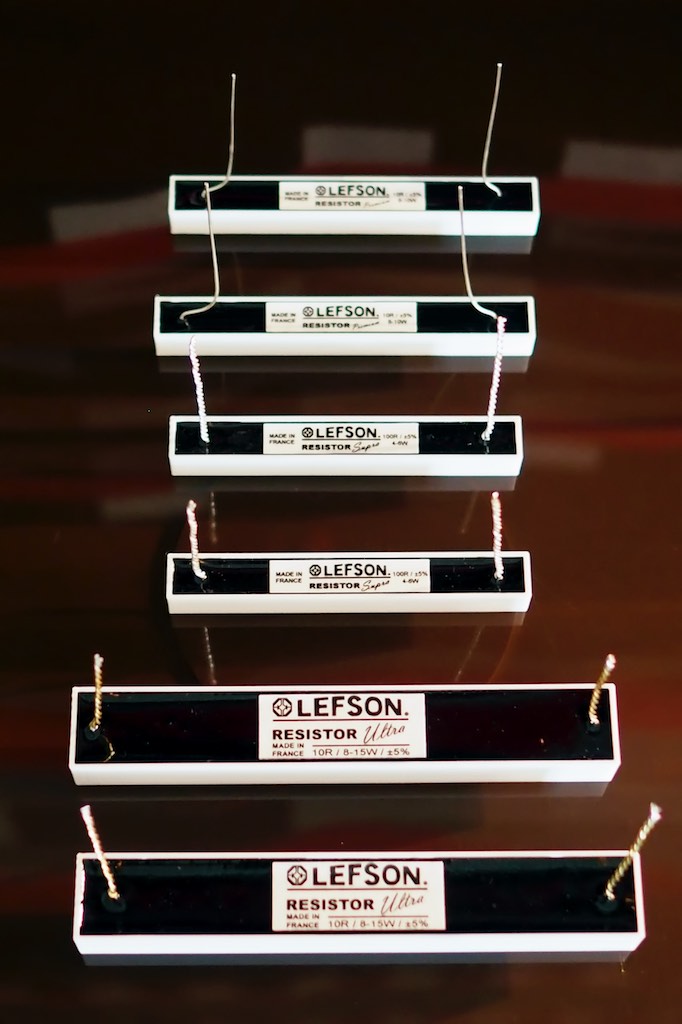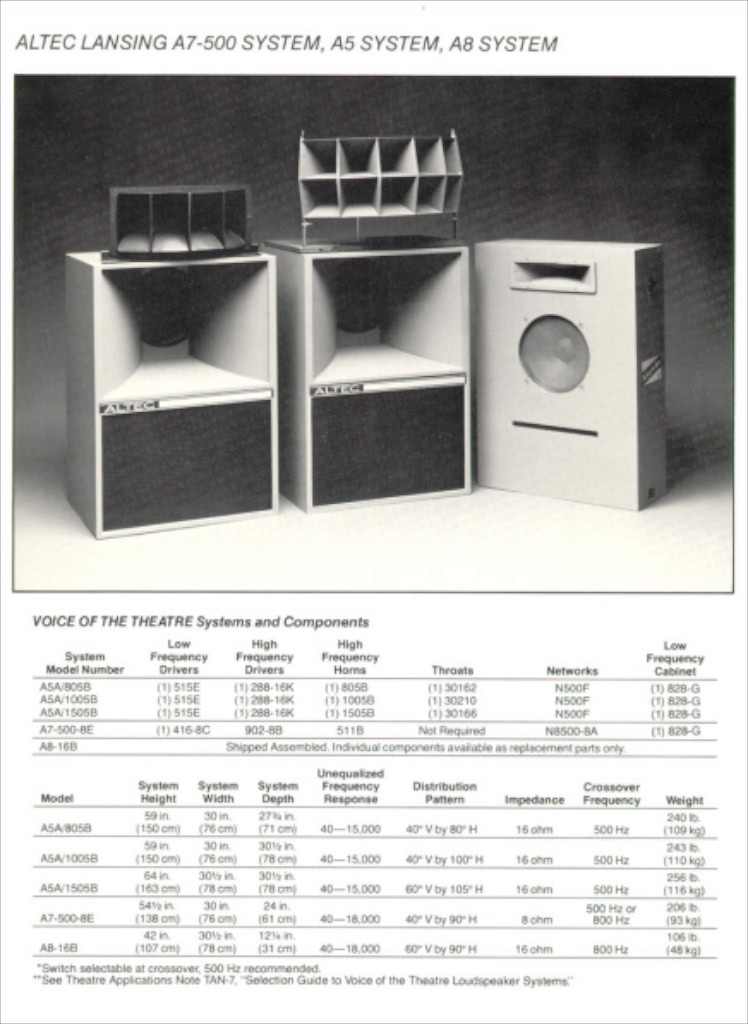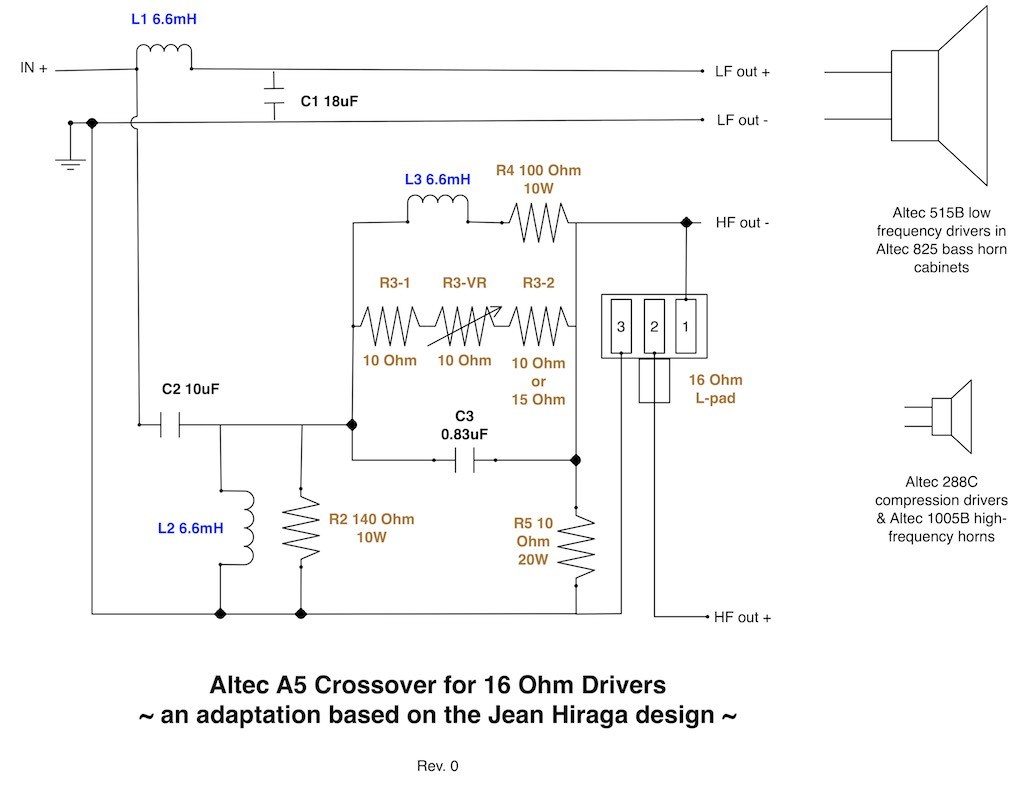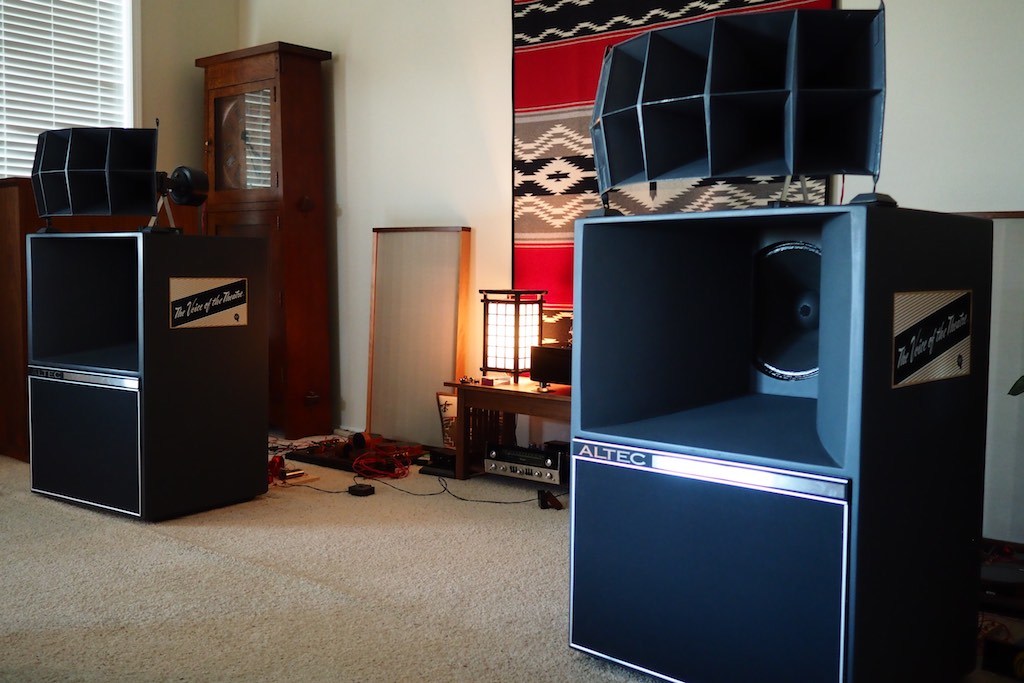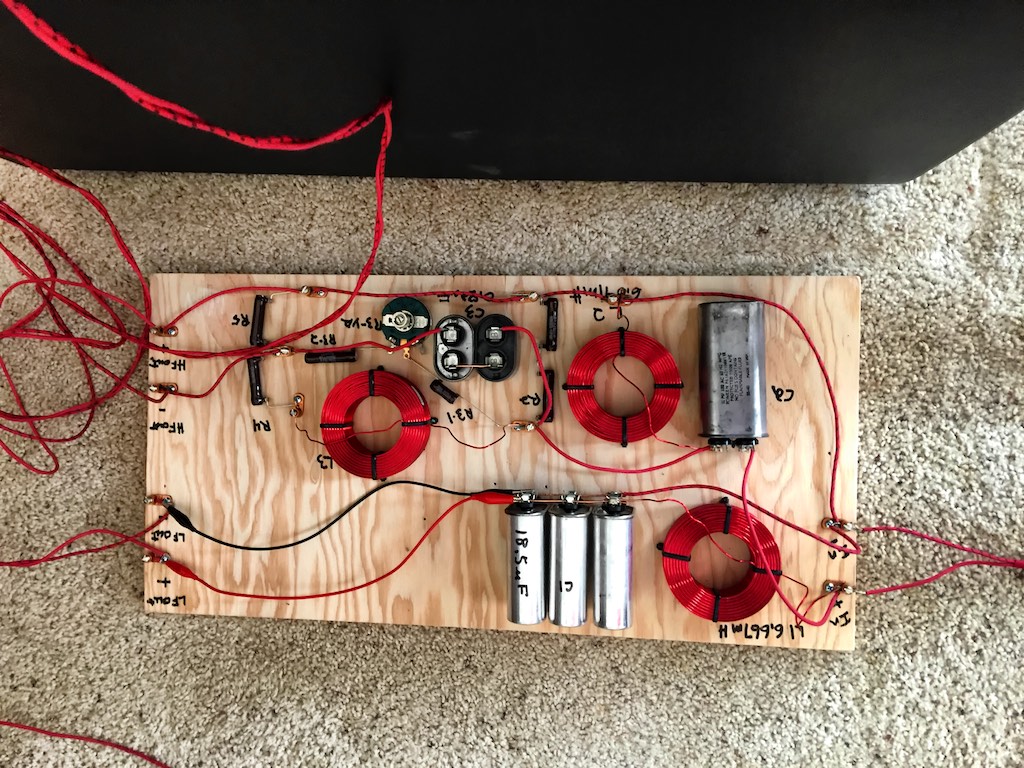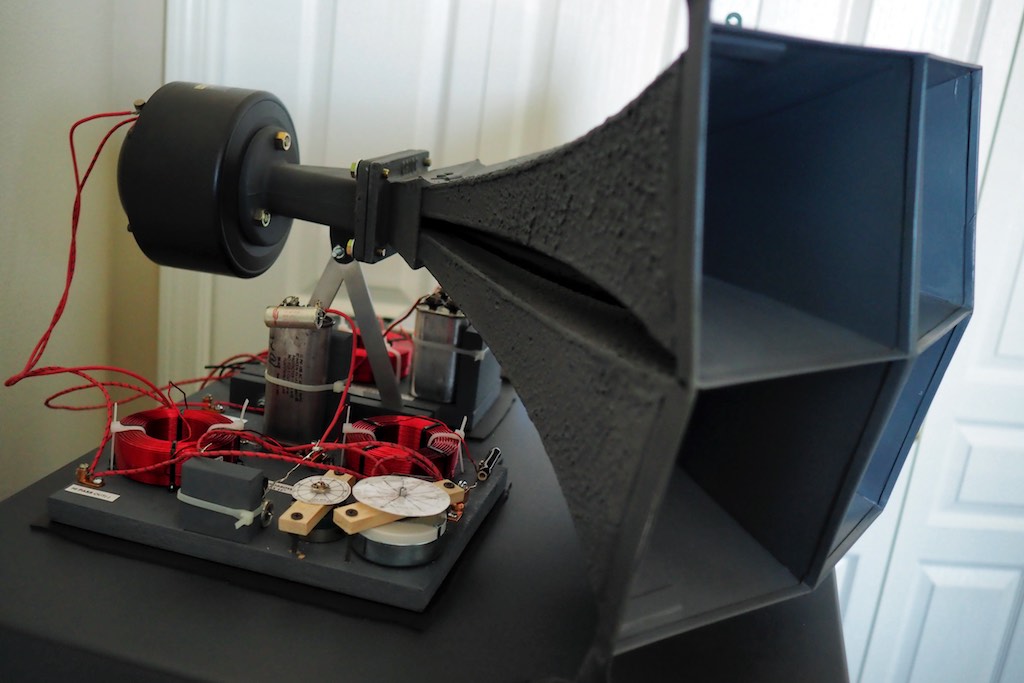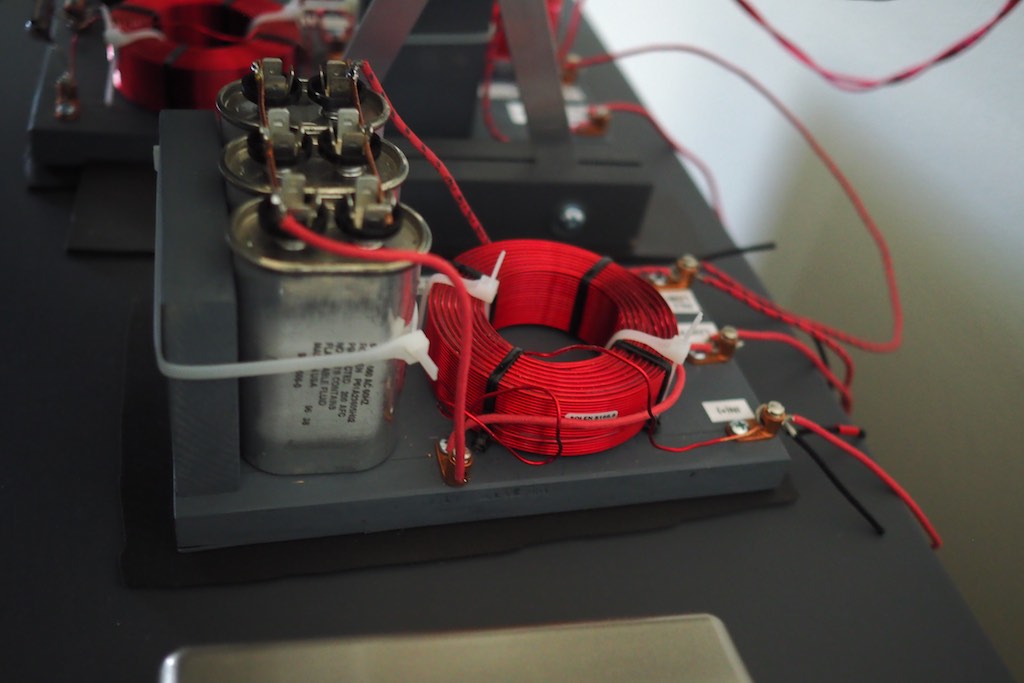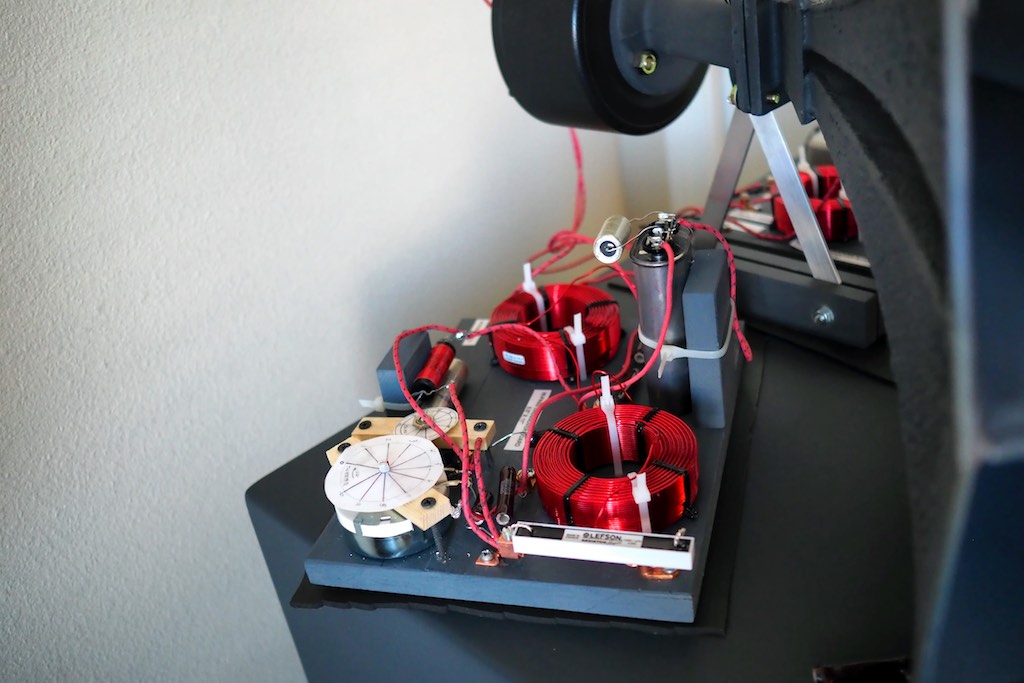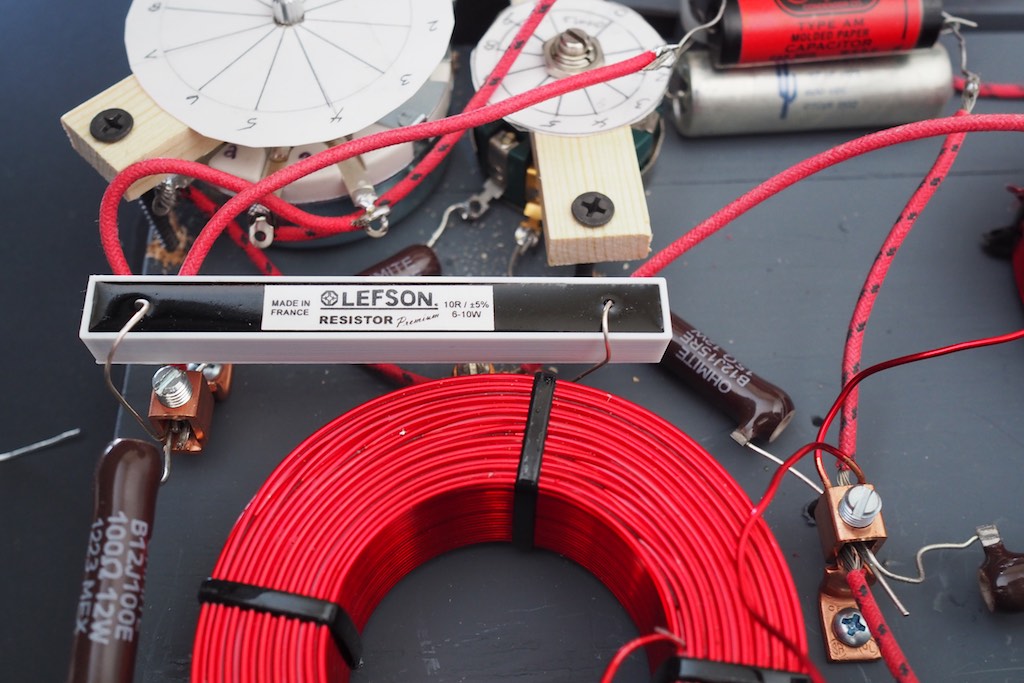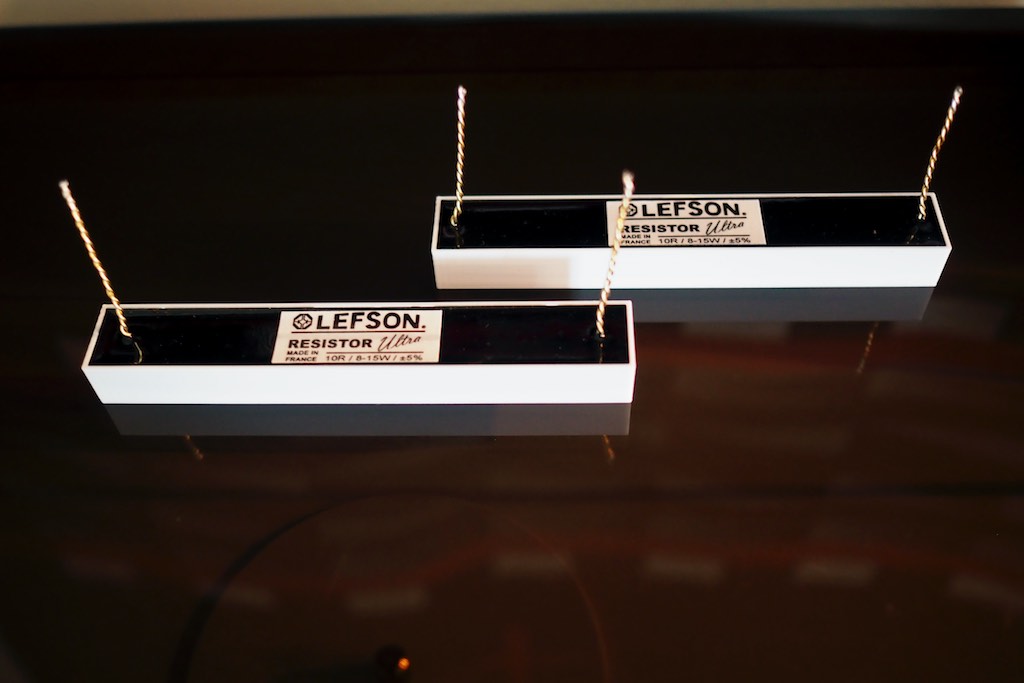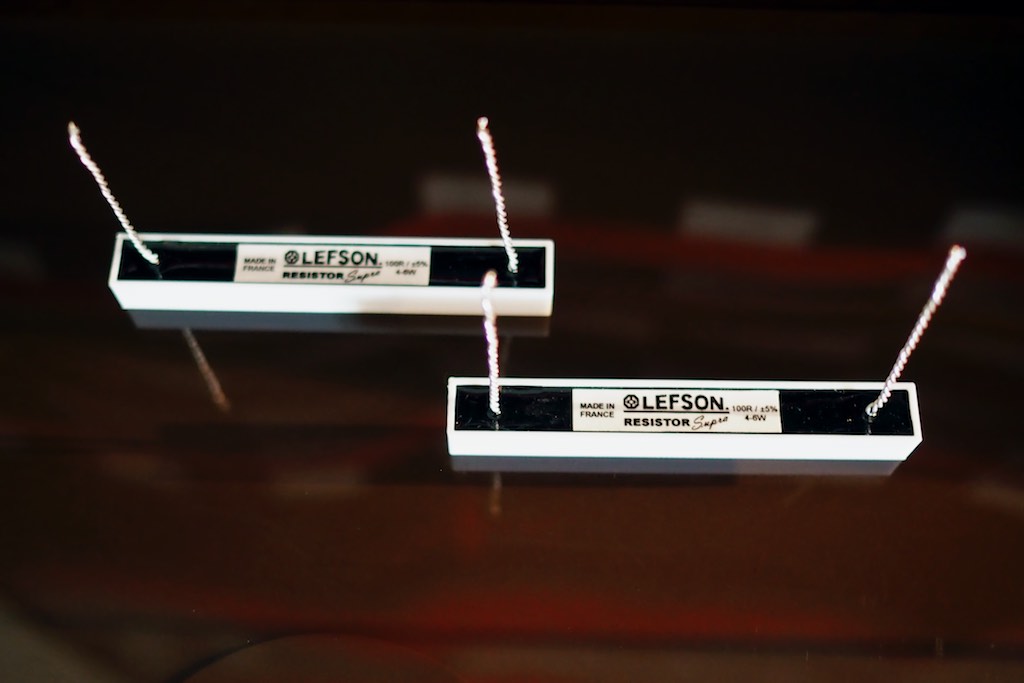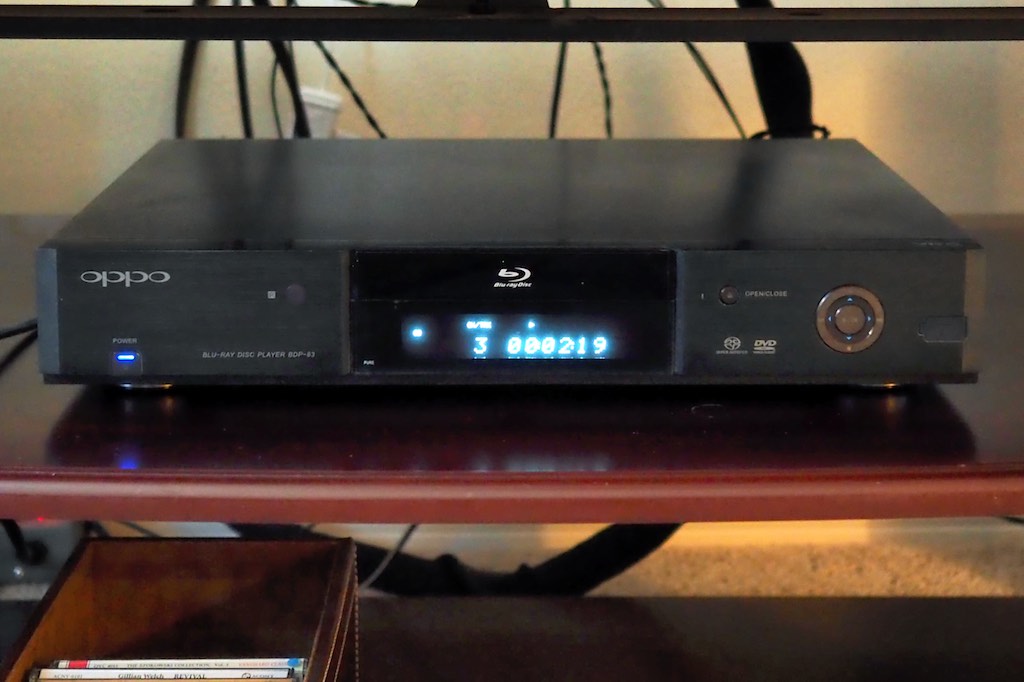As I mentioned in Part 1 of this post, there’s so many good audio things happening right now I thought I’d better write a quick survey for you about all the things that are in play, culminating with my ‘roadmap’ for writing about it all in the near future.
¸¸.•*¨*•♫♪¸¸.•*¨*•♫♪¸¸.•*¨*•♫♪
I introduced Xavier Lefebvre and Lefson Analog Audio Devices to you in my first Lefson French High-End Analog Audio Devices: The Lefson Resistor! post, and then provided you some very preliminary listening impressions in my second , and my third A Saturday Morning 100R Lefson Supra R4 Adventure, and More 10R Lefson Premium R5 Impressions! post.
I'm working on writing an 'in the near future' review for Positive Feedback of the three new ranges of carbon/silver audio resistors from Lefson in Wormhout, France, of which Lefson owner Xavier Lefebvre sent me two 10R (6/10W) Premium resistors, two 100R (4/6W) Supra resistors, and two 10R (10/15W) Ultra resistors to experiment with in the R3-1, R3-2, R-4, or R5 positions in my Altec A5 Voice of the Theatre loudspeaker project crossovers.
It has been pointed out to me that due to the large number of new readers joining Jeff's Place of late (up by over 50%), that I should do a better job of describing the background of some of my audio adventures instead of just assuming that you have been following the ongoing sagas from the beginning.
So for those who are just joining this story, let me give you a little bit of the background on how the Altec A5 Voice of the Theatre Project developed, and now how Lefson has become a part of it.
In the beginning: In 1945 the first Altec Lansing Voice of the Theatre loudspeakers, like the A1, A4, and the A5, began to appear behind the screens in movie theaters, and by 1955 the Academy of Motion Picture Arts and Sciences adopted the Voice of the Theatre loudspeakers as the industry standard.
Ever since I’ve been writing about audio I’ve been interested in the contribution that Altec Lansing Voice of the Theatre loudspeakers have made to film, music, and audio, and I was particularly intrigued by the stories that one of my audio heroes, Keith Aschenbrenner (Auditorium 23), shared with me about his experiences hearing the Voice of the Theatre loudspeakers in the early 1980 in France, while Keith was traveling to Brittany in the west of France during the holidays, when he came across the French enthusiast audio magazine L´Audiophile.
Keith told me about how L´Audiophile had opened a shop in Paris to demonstrate their do-it-yourself (DIY) audio projects and to sell parts to the DIY hi-fi hobbyists of France, and that listening to music at L´Audiophile over their system was a shock to him. Keith told me that when he listened to L´Audiophile’s demonstration system using Voice of the Theatre loudspeakers, he immediately realized that his hi-fi system at home was a far cry from the musical realism and dynamic truths that the L´Audiophile system with those Voice of the Theatre loudspeakers achieved so easily.
I decided that I wanted to hear the historically important Altec Voice of the Theatre sound that those who came before me had heard, so I could experience for myself what had been such an inspiration for others.
I wanted to experience a living Altec Voice of the Theatre history lesson, so I considered two potential choices, the A5 and A7-500 Voice of the Theatre models, as they seemed the most likely to be successfully tamed for a smaller home listening environment, as the Altec Lansing product literature of the day said, the A5 (and A7-500) were designed “to meet the needs of today’s smaller, multiple theaters. They use a carefully designed low frequency cabinet and single bass driver. The A5 is available with a choice of high frequency horns to cover a variety of seating arrangements.”
Given the noted success of Jean Hiraga’s demonstrations with his A5 VOTTs, and the availability of information about the Hiraga-san’s crossover design, the A5 seemed the best candidate for adapting it to home listening use.
So in 2015 I commissioned the restoration of a pair of vintage Altec Lansing A5 Voice of the Theatre loudspeakers with Gary Fischer (1, 2, 3) consisting of 1005B horns, the traditional Alnico 515B low-frequency drivers, and the Altec 288C high-frequency compression drivers, a-la Jean Hiraga.
I chose to go with the 16 Ohm versions of the drivers due to their reputation for being easier to drive, and being smoother sounding than the 8 Ohm versions.
The bass-horn cabinet I chose was the 825B, recommended to me by Gary, with port dimensions similar to those suggested in John Stronczer’s article at Sound Practices.
My A5's differ from Hiraga's in that I chose the ten-cell 1005B Altec horns in place of the fifteen-cell 1505B horns that Jean Hiraga used on his A5's, as a pair of 1505B horns were unavailable at the time I commissioned my A5's with Gary.
So after a year of working on breadboarding the A5's crossovers from scratch, using the Hiraga A5 crossover schematic as a starting point, I finally reached a configuration that I was reasonably happy with, which can be seen in the diagram above. Both Yazaki-san and Pete Riggle provided suggestions for the crossovers construction that proved to be very beneficial to its performance, and tailoring the A5's performance to my tastes and listening room needs.
It's amazing how much a room can affect the overall performance & balance of a loudspeaker. My larger main music listening room is by far the more challenging room to get the voicing right for a pair of loudspeakers, but when done just perfect the sound & musicality of the room is deeply impressive. The room's dimensions are 27’6’’ long by 20’4’’ wide, and with variable ceiling height from 9 to 20 feet.
My main listening room tends to be merciless for equipment that is at all forward, bright, or edgy sounding. However, for equipment that is naturally musical and 'real' sounding, my main listening room is spellbinding!
For my main music system, going from merciless to spellbinding is balanced on a knife-edge of performance. A single resistor or capacitor, or length of wire, can move off that knife-edge of desired performance, so it can sometimes be tricky getting everything voiced perfectly, but when it is voiced perfectly, it is nirvana!
I did all of the breadboarding of the A5's custom crossovers in my main listening room, figuring that if I could get them to sound good there, they'd be fantastic in my video room!
After I got the breadboarding of the A5's crossovers performance to a point where I was happy with them, I moved the A5's into my video room while Altec crossover wizard Pete (Pete Riggle Audio Engineering) consolidated my big breadboard crossovers into compact crossovers for use in my video room.
In my video room I could not place the A5's crossovers on the floor behind the loudspeakers because there wasn't room, as the A5's have to be placed close to the front wall.
Placing the crossovers in front of the A5's provided easy access, but also created a tripping hazard, so that was out.
I didn't want to mount the crossovers inside the A5's cabinets because it made it too much work to do modifications & tweaks to the crossovers.
Pete built me a clever quad of crossover boards for the A5's, where the high-frequency & low-frequency sections were consolidated as compactly as possible on separate boards, which allowed me to place them atop my A5's on each side of the brace for the 1005B Altec horn, so I had easy access for the continuing tweaking & modifications that were sure to come.
Pete's crossovers are laid out very functionally & compactly, and they are nicely executed. Their appearance is not 'pretty', but neither are my A5's, with their industrial grey finish.
The layout of Pete's crossovers are perfectly executed to serve as convenient 'test mules' for further experimentation & development over time. Many thanks to Pete for his outstanding work on getting these crossovers into user-friendly form!

A5 Voice of the Theatre loudspeakers with Leben RS100 line stage and vintage McIntosh MC240 stereo amplifier.
My video room where my Altec A5 Voice of the Theatre loudspeakers reside has smaller dimensions than my main music room, of 11-feet x 12-feet x 9-feet (ceiling), with a 6′ x 3’5″ x 9′ foyer on one end. The great thing about my video room is that it is very easy to get it sounding good. My video room is not capable of the same dizzying heights of musical & sonic performance that my main music room is, which is why my main music system is in my the larger room, but my video room is still very satisfying from a musical perspective.
There is a myth that has been circulating for a long time that Altec Voice of the Theatre loudspeakers don't work well in small rooms like my video room, and people tend to suggest smaller loudspeakers for smaller rooms, like my Harbeth Super HL5 loudspeakers that I have transitioned to my bedroom system, for example.
Don't listen to that myth about Altec Voice of the Theatre loudspeakers not working in small rooms, it is complete bullshit!
Altec Voice of the Theatre loudspeakers work superbly in small rooms with a level of musicality that will awe you, and to be quite frank, they are so much better than my Harbeth Super HL5 loudspeakers in my smallish video room that it's ridiculous! My Harbeth Super HL5's are great loudspeakers, but they don't even come close to what my Altec A5 Voice of the Theatre loudspeakers can do, and the investment is about the same price-wise for both of them. Need I say more?
The equipment I've settled on using in my video room is the aforementioned Altec A5 Voice of the Theatre loudspeakers with their custom crossovers, a vintage McIntosh MC225 restored by Yves Beauvais (Vintage Vacuum Audio), a Leben RS100 U line stage, and an Oppo UDP-203 Ultra HD Blu-ray Disc Player as the source (I also use my Apple MacBook Pro as a source as the mood strikes me).
I have read (I forget where) that the vintage McIntosh MC225 stereo amplifier was one of Jean Hiraga's favorites with his Altec A5 Voice of the Theatre loudspeakers, and it's easy to hear why, as there's superb synergy between the two.
For cabling, I'm using Duelund DCA16GA for speaker cables, and Belden 8402 interconnects from my Phillips television to the Leben RS100 U line amplifier, and from my Leben RS100 line preamplifier to my vintage McIntosh MC225 stereo amplifier. I had tried using Duelund DCA16GA interconnects from the Leben to the Mac, but the Leben didn't like the unshielded DCA16GA interconnects (they hummed), so in went the shielded Belden 8402 interconnects, which worked fine. I used the unshielded Duelund DCA16GA interconnects between the Leben and the Oppo UDP-203 Ultra HD Blu-ray Disc Player with excellent results. Go figure!
By now you're probably saying, "Hey, what about the Lefson resistors!"
Point well taken, but I described all of that about the Altec A5 Voice of the Theatre loudspeakers so you could get a feel for what my system context was like when the Lefson resistors arrived, or at least sort of, as unfortunately I had a bit of a mishap occur in the midst of getting a feel of the Lefson resistors musical & sonic performance in the A5's crossovers.
As I reported previously in A Saturday Morning 100R Lefson Supra R4 Adventure, and More 10R Lefson Premium R5 Impressions!, I had a very good initial listening session with the Lefson Premium and Supra resistors, and then last Sunday audio pals Ron & Leo joined me for some audio comparisons of the Lefson resistors in the A5's crossovers.
We had a nice afternoon of comparing the Premium, Supra, and Ultra Lefson resistors in positions R4 (Supra) and R5 (Premium & Ultra) in the A5's crossovers to the Ohmite Brown Devil wirewound resistors that Yazaki-san had recommended for the A5's crossovers.
The Ohmite Brown Devil wirewound resistors are Yazaki-san's recommended resistor for his 'real sound' approach in this A5 crossover application, and they are very good musically, with superb tone and overall musicality. They're also relatively inexpensive, which is always nice!
Let me quickly recap the construction of the Lefson resistors.
From the Lefson website: “The Lefson Resistor is a very high performance pure silver/carbon audio resistor. It contains a pure graphite resistive element and two pure silver leads. Suitable for speaker crossover or Emitter/Source resistor of transistors in preamplifier/amplifier, the Lefson Resistor is pushing up the limits of sound reproduction.”
The Premium resistor from Lefson is made with a carbon resistive element and silver leads, and is available in values from 0R68 (0.68 Ohms) to 200R (200 Ohms), with power ratings of 4-10 watts.
The Lefson Supra resistor is also made with a carbon resistive element, but with double-wound silver leads, and is also available in values from 0R68 (0.68 Ohms) to 200R (200 Ohms), with power ratings of 4-10 watts.
The Ultra resistor from Lefson is made with dual carbon resistive elements, with double-wound silver leads that are gold-coated, and available in values from 0R33 (0.33 Ohms) to 100R (100 Ohms), with power ratings of 6-15 watts.
All of the Lefson resistors are potted in a plastic case with a material that appears to be similar in appearance the the material that is used to pot the Duelund CAST capacitors.
Ok, back to the listening results.
To summarize the listening results from Ron's & Leo's visit, Ron and Leo both preferred to the Lefson resistors to the Ohmite Brown Devil resistors by quite a lot.
From an audiophile sonic perspective, the Lefson resistors were notably more transparent, had greater resolution of detail, a much greater presentation of soundspace, and a better delineated soundstage.
I was playing disc jockey for the comparative listening sessions, so I didn't get a sweet spot presentation of the differences between the Lefson Premium and Ultra resistors at R5, but Ron & Leo both preferred the Lefson 10R Ultra resistors to the Lefson 10R Premium resistors, and both of them to the Ohmite Brown Devils. They said that they thought the Lefson Ultra improved upon the Lefson Premium resistors' performance overall, but that the differences were relatively subtle.
I had intended to follow up by listening to the differences between the Lefson Premium & Ultra resistors the next day, but as bad luck would have it, my elderly OPPO BDP-83 Blu-Ray player that I was using for my reference digital source in my A5 Voice of the Theatre system quit working. I disassembled the BDP-83 and determined that the transport, which had been acting up for quite a while, finally died.
The BDP-83 exhibited really nice audio quality with my A5 Voice of the Theatre loudspeakers, with a relaxed & musical presentation that was full of rich tone and compelling musicality, so I was sorry that its fate had finally consumed it.
So I went out and purchased Oppo's latest offering, the new Oppo UDP-203 Blu-ray player as a replacement.
While I'm thrilled to have a new high-performance Oppo UDP-203 Blu-ray player in my system, it also means that my ability to gather listening impression of the Lefson resistors has been curtailed until the new Oppo is fully run-in, so I that know what's what in the contribution to the music & sonics qualities to the system.
Normally it takes about 100 hours or so for new equipment to run in, so I've got my Oppo playing music as much as I can - and conditioning the Lefson resistors at the same time - to get it run-in, then I'll start back into serious listening to accurately characterize the Lefson resistors' performance.
¸¸.•*¨*•♫♪¸¸.•*¨*•♫♪¸¸.•*¨*•♫♪
Ok, that is the conclusion of my Part 2 Lefson update, with Part 3 to follow in the next few days.
I’ve got to go, but check back in the next few days for a bunch more news that I want to share with you!
As always, thanks for stopping by, and may the tone be with you!




